|
In 2016 Donald Trump ran for president as an outsider and disrupter. This helped him defeat Hilary Clinton, a Washington insider with over thirty years of baggage. According to exit polling during the 2016 presidential election, the most important quality identified by voters was that the candidate would bring change (https://cookpolitical.com/analysis/national/national-politics/what-do-voters-want-confrontation-or-compassion). What are voters looking for this time? What qualities do voters look for in a presidential candidate, and what role does leadership play? Leadership Qualities in a Good President: According to many historians, there are several leadership qualities found in good presidents (https://www.ushistory.org/gov/7e.asp). They include the following:
Leadership in Turbulent Times: We are certainly living through turbulent times. The coronavirus pandemic has killed or sickened millions of people, forced millions out of work, and placed a dark cloud over the economy. There are ongoing protests over racial injustice, and a widening political divide. But history shows us that America has lived through much more difficult times that required great leadership to see us through. No president was faced with a more difficult challenge than Abraham Lincoln who lead the country through a devastating civil war. Franklin Roosevelt came to power during the Great Depression and then lead the country through World War II. At moments of great challenge these presidents were guided by a sense of moral purpose, sought to heal divisions, and had to bring the country together to summon a common purpose. Doris Kearns Goodwin explores presidential leadership in her book “Leadership: In Turbulent Times”. She discusses the following traits that served several presidents well during turbulent times:
Why We Vote the Way We Do: Research into why voters choose one presidential candidate over another has been going on for many years. It should be no surprise that the single most powerful predictor of a person’s vote choice is his/her political party affiliation (https://pprg.stanford.edu/wp-content/uploads/10-The-psychology-of-voting.pdf). Party affiliation is usually based upon shared values and preferences on a handful of key policy issues. The second predictor of who a voter will choose is based on the voter’s perception of the candidate’s personality traits (intelligence, knowledge, trustworthiness, and ability to be a strong leader). Since I am not affiliated with a political party, I lean towards this camp. This will be the 12th presidential election that I voted in. In the previous eleven, I voted for the Democratic candidate four times, the Republican five times, and a third-party candidate twice. Trump vs Biden: Make no mistake, this election is a referendum on Donald Trump. Joe Biden is a secondary character in this drama. Will voters continue to respond to President Trump’s seemingly never-ending chaos and drama? Or will they be motivated by a more steady and stable form of leadership? According to a recent NBC/Wall Street Journal poll, 64% of Republicans like Trump’s willingness to confront and challenge the establishment in government and to shake up business as usual. In contrast, 70% of Democrats prefer a leader, like Joe Biden, who will bring competence and compassion to the way the government operates. Why I Don’t Believe Donald Trump Will Win Reelection: The president has not positioned himself to unify the country at a time when it is much needed. This country needs a beacon of hope due to the pandemic, economic uncertainty, and ongoing protests and anger over racial injustice. Donald Trump has used these issues to divide the country rather than to unite it. He has made no appeal to American optimism and aspirations. According to a recent Yahoo News/YouGov poll, most registered voters believe that in the last four years bipartisanship, race relations, and crime have worsened. Sixty-two percent of registered voters list Donald Trump’s management of COVID-19 as a major failure. COVID cases are surging across the country, and the stock market is sensing a weakening economy as a result. The president has no prescription for either COVID-19 or the weakening economy. In fact, the president has not articulated any vision or policy proposals for the next four years. The American people really don’t know what Donald Trump believes. He will do and say whatever he thinks will get him reelected. Donald Trump has shown scorn for science, puts politics before people, and aligns himself with the worst elements of our society. He doesn’t know the damage he does by not denouncing QAnon and right-wing militias. I’m sure that he doesn’t really believe in what these groups espouse, just like he really doesn’t hold the views of the religious right. But they are part of his base, and that is all that matters. Why I Didn’t Vote for Donald Trump: I didn’t vote for Donald Trump in 2016 because he had never held elected office before, he had no experience in governing, he had little foreign policy experience, and he lacked the temperament and character to lead this country. Donald Trump has now been president for the better part of four years (seems like forty), and my instincts were correct. Here is a list of my top reasons for not voting for Donald Trump in 2020 (but I could have listed many more):
According to taped conversations with Bob Woodward, the president knew the dangers of the coronavirus, but chose to down play them. It is obvious that the president didn’t want to hurt his reelection chances and gambled with peoples’ lives. This was the deal breaker for me.
Americans are resilient, and this country will survive and thrive regardless of the outcome of the 2020 presidential election. Due to the millions of mail-in ballots, we may not know the winner for many days after the election. We all need to be patient and let the process work itself out. If Donald Trump wins the election, he will not tear up the Constitution and declare himself “President for Life”. If Joe Biden wins, he will not confiscate your guns, impound your gasoline powered vehicles, or turn the suburbs into public housing projects ruled by violent leftists. I have never seen the American electorate more energized by an election, and this is encouraging. If our “experiment” in self-government is to last, more citizens need to be involved. The electorate needs to champion candidates, for all levels of government, who will truly represent the people, and not just their political party. Yes, we are living through turbulent times, but we have been here before. This country is at an inflection point. It’s time we take stock, learn from the lessons of the past, and move forward with the courage and determination to make this representative democracy work for the vast majority of Americans.
If you enjoy reading this type of commentary please subscribe to my blog and tell a friend. You will receive an email notification when new blogs are posted. The email will come from the site’s email: [email protected]. Thanks
2 Comments
Large numbers of voters are not waiting until November 3, 2020 to cast their ballots. As of this date over 23 million Americans have voted, and so have I. Like me, most Americans had decided a long time ago who they’d vote for, at least for President. Maybe the pandemic restrictions have focused our minds more acutely on the election this year. Or maybe people are so sick of politics that they just want to vote, and move on with their lives. I fall into both camps. COVID-19 has forced states to change the way that elections are held, and have provided voters with more options. Let’s take a look at some of these new options and I will share my voting experience. What’s the Rush to Vote?
Early Voting: In order to facilitate voting during the pandemic, many states have taken steps to make it easier to register to vote, and have expanded ways to cast a ballot. Early voting of some sort is now available in 43 states and the District of Columbia. Options for early voting include mail-in voting/absentee voting, early in-person voting, and off hours voting, including weekends. For the specifics on each state follow this link: (https://www.ncsl.org/research/elections-and-campaigns/early-voting-in-state-elections.aspx). Many states now allow voters to vote absentee without having to provide a reason. States like New York that require a valid reason to vote absentee, now consider fear of COVID-19 a valid reason for requesting an absentee ballot. Some states have sent absentee request forms to all registered voters. California, Nevada, and the District of Columbia have taken it a step further by sending mail-in ballots to all registered voters (https://www.usnews.com/news/elections/articles/2020-10-16/a-2020-success-story-early-voting-soars-even-as-the-coronavirus-pandemic-rages-on). Voters now have several options once they complete their mail-in ballot. They can use the United States Postal Service, official drop boxes set up by the counties and states, in-person drop off sites, and at polling places once in-person voting begins. Most states will accept mail-in ballots even after election day, as long as they are post marked on or before November 3, 2020. This varies from state to state so check with your local election officials if you are unsure. Here is a link for the specific rules for each state (https://www.usa.gov/election-office). Reports indicate that Democrats have outvoted Republicans 2 to 1 so far in this 2020 Presidential election (https://www.bbc.com/news/election-us-2020-54572790). Of these early voting Democrats, women and blacks are voting in high numbers. Republicans may be following President Trump’s lead by not trusting mail-in voting. Democrats may win the early vote, but they shouldn’t become over confident. Republicans will probably show up in large numbers at the polls on November 3, 2020. Pre-processing Early Ballots: How states handle ballots received prior to election day varies widely. It ranges from verifying signatures, opening envelopes, and readying ballots for tabulation. Twenty-two states process mail-in and absentee ballots upon receipt. Another twenty-five states process them starting several weeks, to just hours before election day. Pennsylvania, Wisconsin, Alabama, and Mississippi are not allowed to process or count mail-in ballots before election day. The following link provides the specifics for each state: (https://www.ncsl.org/research/elections-and-campaigns/vopp-table-16-when-absentee-mail-ballot-processing-and-counting-can-begin.aspx). If the election is close, the delay in processing mail-in and absentee ballots may result in a winner not being known for hours to days after the close of polls on November 3, 2020. Americans need to be patient and be prepared for a delayed election result. My Voting Experience: I have known for many months how I would cast my vote in the Presidential election, but there were many down ballot candidates, propositions, and measures that needed further consideration. After spending the last several weeks watching news programs, listening to candidate forums (over Zoom of course), reading newspapers, and wading through dozens of election mailers, I sat down and filled out my mail-in ballot this week. In May, California Governor Gavin Newsom issued an executive order making all registered voters in the state automatically eligible to vote in the November 3, 2020 General Election by mail. Therefore, every voter in California was mailed a mail-in ballot. The process really got started last month. Here is the time line:
 If you use a drop box to deliver your ballot, make sure that it is officially sanctioned. In California, official drop boxes must include the county seal and be securely bolted to the ground. The use of unauthorized drop boxes to collect ballots is illegal in California. This has not stopped the GOP from placing unofficial drop boxes in several locations in Southern California. The motives for this are not exactly clear. Threatened with legal action, the GOP has stopped claiming that these drop boxes are official, and is restricting where they can be placed (https://www.npr.org/2020/10/16/923969669/california-eases-off-legal-threats-over-gop-unauthorized-ballot-drop-boxes). Counties publish the sites where sanctioned drop boxes are located. So check with county election officials if you are unsure. When voting by mail it is important to get your ballot in as soon as possible. This leaves time to correct mistakes that sometimes occur, such as a signature that can’t be verified for whatever reason. The more people who vote early, the shorter the lines will be on election day, minimizing the spread of COVID-19. Getting your ballot in early will also ensure that your vote is included in the initial election results which will be reported shortly after the polls close on election day. The sooner the election results are known, the less opportunity there will be to spin a false narrative around the legitimacy of the election. If you enjoy reading this type of commentary please subscribe to my blog and tell a friend. You will receive an email notification when new blogs are posted. The email will come from the site’s email: [email protected].
Thanks, Armchair American Every four years we are reminded that the President and Vice-President of the United States are not democratically elected. They are elected by a group of 538 electors of the Electoral College. This November 3rd (or sooner if you vote by mail) when you cast your vote for President and Vice-President, you will actually be telling your State which candidate you want the State’s electors to vote for. What is the Electoral College? Does it still work as originally conceived, and what are the alternatives? Electoral College: It is a body of 538 electors which is selected every four years from each State and Washington D.C., for the express purpose of electing the President and Vice-President of the United States. Every State gets one elector for each member of congress. California for example, has 2 Senators and 53 Representatives in the House of Representatives, and therefore has a total of 55 electors. Washington D.C. has a total of 3 electors. As spelled out in the Constitution, each State chooses its own electors. The selection process differs by political party and by State. The National Association of Secretaries of State has compiled a list of the laws governing the selection of Presidential Electors for each State. (https://www.nass.org/sites/default/files/surveys/2020-10/summary-electoral-college-laws-100220.pdf). In all States, except Maine and Nebraska, the Presidential candidate with the most popular votes in that State, receives all of the State’s electors. In Maine and Nebraska, the electors are awarded to the popular vote winner of each congressional district, plus two electors are awarded to the winner of the State’s popular vote. In order to be elected President, the candidate must receive the majority of the electors, 270 or more. Important Dates:
Why We Have the Electoral College: Article 2, section 1 of the U.S. Constitution established that electors selected from each State, and not a direct vote of the people, would elect the President and Vice-President. The Constitution established the number of electors each State was entitled to, but left it up to the individual States how to select their electors. Originally the candidate with the second highest number of electoral votes would become the Vice-President. This was changed in 1804 with the 12th Amendment, which directed electors to cast separate votes for the President and Vice-President. The drafters of the Constitution didn’t want a direct vote for President for several reasons. They needed to appease the less populated States, particularly those in the South who feared that a direct vote would disadvantage them. The drafters were also fearful that a direct election by all voters could be corrupted by foreign and other unscrupulous interests. It was also feared that the citizenry would not be well informed in order to make such an important selection to the highest office in the land. According to Alexander Hamilton, “A small number of persons, selected by their fellow citizens from the general mass, will be most likely to possess the information and discernment requisite to such complicated investigations.” (https://guides.loc.gov/federalist-papers/text-61-70). Reasons to Change the Electoral College: According to a recent Pew Research poll, a majority of U.S. adults favor replacing the Electoral College with a simple popular vote system for electing the President. (https://www.pewresearch.org/fact-tank/2020/03/13/a-majority-of-americans-continue-to-favor-replacing-electoral-college-with-a-nationwide-popular-vote/). Below is a list of the main reasons to replace the current system:
Reasons to Keep the Electoral College:
The National Popular Vote: Fixing the current system through a Constitutional amendment is a non-starter in the present political climate. Is there a non-Constitutional change that could achieve the same outcome as eliminating the Electoral College? The answer is yes, and a movement is already underway to do just that. The “National Popular Vote” is an organization established, not to eliminate the Electoral College, but to effectively neutralize it. The premise is rather simple. If enough States agree to pledge all of their electoral votes to the candidate who wins the national popular vote, that candidate will win the Presidency, effectively side-stepping the Electoral College. When enacted by enough States with a combined electoral vote count of 270 or higher, the National Popular Vote interstate compact will be established and go into effect. Since 2006, the National Popular Vote bill has been enacted by fifteen States and Washington D.C., representing 196 electoral votes. (https://www.nationalpopularvote.com/). This system would be more democratic in ensuring that every voter, in every State, has a direct vote in electing the President and Vice-President of the United States. With the 2020 Presidential election just three weeks away, I can’t think of a better time to review just how we elect our President, and to consider all the ramifications surrounding the process. The Electoral College has some pluses and minuses, but does it serve the best interests of the American people? I certainly don’t think that it functions as originally intended. The concentration of power in a few Northern States is no longer a problem. The selection of qualified Presidential Electors to weed out unsuitable candidates is an antiquated notion. In the age of the internet and mass media, we no longer have to rely upon direct contact with a candidate to hear their message. A national popular vote system would be more democratic and give voice to a more diverse group of candidates. The Democrat and Republican parties have not served this nation well over the past several decades. I seriously think that it’s time for some fresh ideas and fresh faces to confront the challenges ahead.
If you enjoy reading this type of commentary please subscribe to my blog and tell a friend. You will receive an email notification when new blogs are posted. The email will come from the site’s email: [email protected]. Thanks, Armchair American President Trump and the Republican Party are doing their best to label Joe Biden as a socialist. This has become a prominent message coming out of the Trump campaign. Donald Trump has called Joe Biden a “Trojan horse for socialism”, and Biden’s “socialist agenda” was the republican’s favorite boogeyman at last summer’s convention. So, is Joe Biden intent upon unleashing a socialist agenda, bringing down capitalism and altering the American way of life? It all depends on your definition of socialism. Let’s take a closer look at socialism and whether or not Joe Biden’s agenda fits the definition. Socialism: Various forms of socialism have been around for centuries. Socialism as it is now understood, emerged in response to the extreme economic and social changes experienced by the working class during the Industrial Revolution. Wealth disparities grew and working conditions deteriorated during this period. Socialism is an economic and political system based on public ownership of the means of production, which includes the machinery, tools, factories, and natural resources to produce the goods required by society .(https://www.investopedia.com/terms/s/socialism.asp). Under socialism, individuals can still own property, but industrial production, natural resources, and infrastructure are communally owned and managed by a democratically elected government (the exception being communist countries that have authoritarian central governments). Any surplus or profit from these communally owned resources benefit the citizens. In a pure socialist system, all property is communally owned, a strong central government controls the economic production of goods and services, and provides citizens with their basic necessities including food, housing, medical care and education. The government essentially redistributes wealth and narrows the gap between rich and poor. There are no modern-day countries that have a pure socialist system. Cuba and China have strong elements of socialist market economies. These are actually mixed economies, where private enterprise and free markets are contributing more each year to the overall economic output. In China, privately owned companies generate from 33% to 70% of the GDP. In Cuba approximately 20% of the workforce is engaged in private enterprise. China is thriving principally because of its embrace of capitalism and the development of a market-based economy. Countries such as Venezuela and North Korea, which cling to their stringent socialist models, are economic failures and their citizens are suffering mightily. Most countries have mixed economies which contain some degree of capitalism and a number of socialist policies. The United States has a capitalist economy, controlled by government regulation, and backed up by entitlement programs. Free public education, Social Security, Medicaid and Medicare are all considered socialist programs. When enacted, these programs were considered very controversial, and there was concern that they would lead the country down the road to socialism. But can you imagine doing away with these programs today? Social Democracy: Many consider Norway, Sweden, and Denmark to be socialist countries, but they are not. They are social democracies. Social democracies have free market economies paired with high taxes to support generous government entitlement programs. Individuals and corporations own a significant portion of the capital and means of production. Democratically elected governments redistribute wealth through high levels of taxation and strict regulations on labor and capital. In return for high taxes, most citizens are entitled to free education (through university), universal healthcare, subsidized childcare, subsidized housing (in some cases) and generous pensions. This system works well in the Scandinavian countries because there is a high level of trust in the government and government institutions. Distrust of the government in the United States is high, and therefore most citizens take a dim view of high taxes and wealth redistribution. Joe Biden’s Policy Proposals: I view Joe Biden as a moderate democrat. In an effort to unify the party he has had to move further to the left to appease some of the progressives (Bernie Sanders). Some of Biden’s policy proposals call for big spending. So does that make him a socialist? Not according to the previous discussion on socialism. Let’s examine some of Joe Biden’s proposals that the republicans claim will lead us down the road to socialism:
A comprehensive list of all of Joe Biden’s policy proposals can be viewed at his website: (https://joebiden.com/joes-vision/#). Many of Joe Biden’s policy proposals look like big government tax and spend programs. But on closer inspection they are really long overdue investments in America. Both political parties have argued that a big infrastructure bill is needed. I can think of no greater investment in our future than in education. Giving people the tools that they need to work and thrive makes them less dependent on the government, not more. In my view, smart investments in people, infrastructure, and American jobs, will pay dividends well into the future. Spending on small businesses, private sector jobs, green technology, and required infrastructure upgrades, is anything but socialism. Make no mistake, it doesn’t matter which political party is in office, government spending is massive and it will only get larger. The political parties just have different priorities for that spending. Even during a roaring economy, annual budget deficits under Donald Trump reached one trillion dollars, and that was prior to the start of the pandemic. (https://www.forbes.com/sites/chuckjones/2020/02/01/trumps-deficits-are-racing-past-obamas/#380f76348199). At least Joe Biden is prepared to increase taxes to pay for his budget priorities. The republicans fool themselves into thinking that tax cuts will “starve the beast” and force lower government spending. In reality, the deficits and debt march steadily higher. High budget deficits to support low taxes might be an effective reelection strategy, but it is a disastrous long-term strategy. The president has already passed trillions of dollars in legislation to get the crippled economy going again, and he will pass legislation to spend trillions more in the coming weeks. That doesn’t sound like a laissez-faire, free market economy to me. So be careful who you label “socialist” Mr. President. Joe Biden’s overall policy package is not socialist. It calls for a lot of government spending, but it is mostly offset by eliminating President Trump’s tax reductions of 2017. Many socialist democracies around the world are thriving because they have found a balance between high taxes and the services that the citizens want. This country wants the benefits of a social democracy but is unwilling to pay for them. At least the democrats are more honest about it than are the republicans. If you enjoy reading this type of commentary please subscribe to my blog and tell a friend. You will receive an email notification when new blogs are posted. The email will come from the site’s email: [email protected]. Thanks, Armchair American |
AuthorThe Armchair American. Archives
November 2024
Categories
All
|


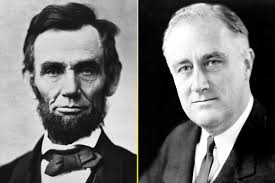

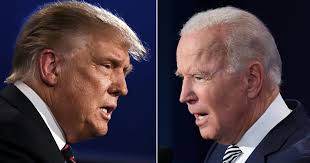

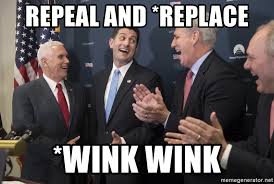
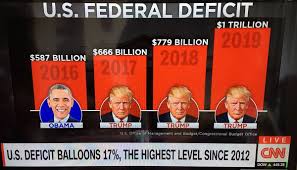


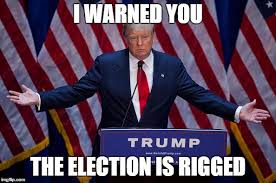

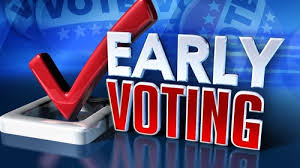

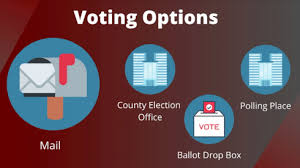






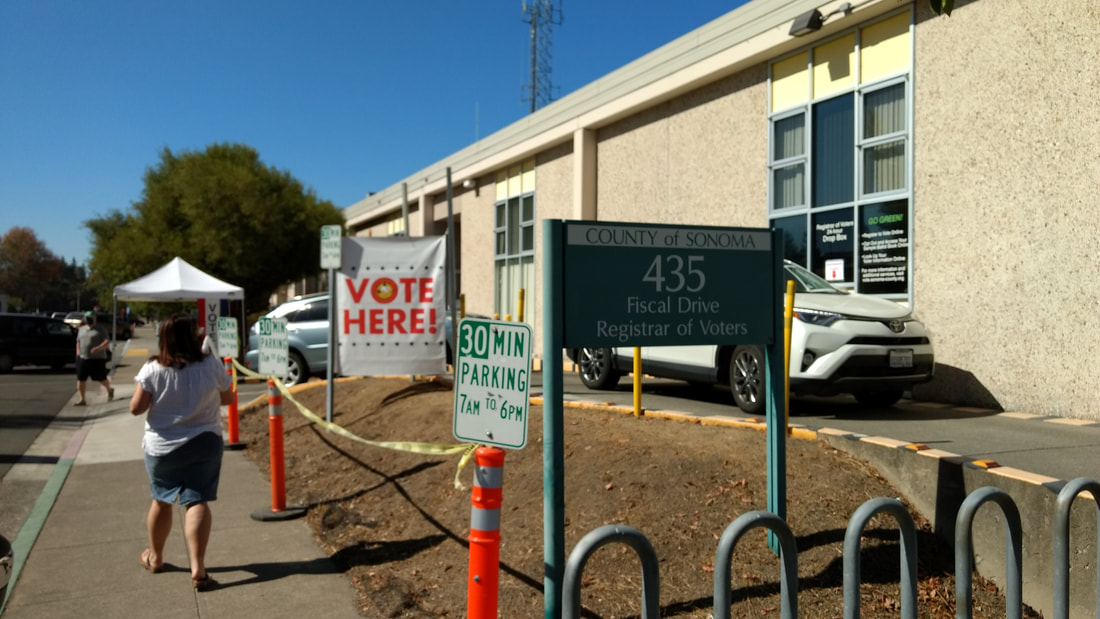

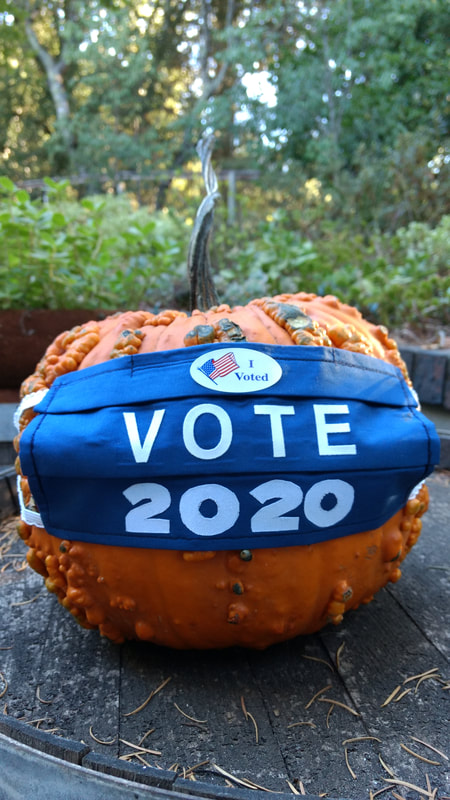
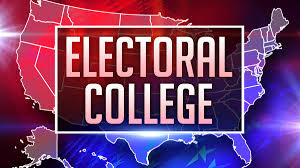


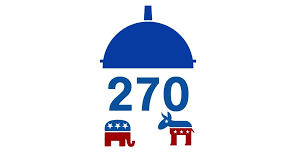



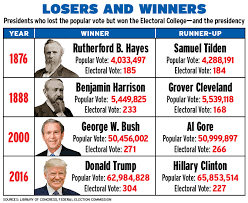


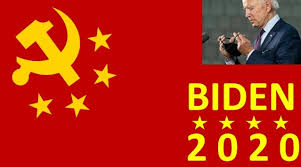


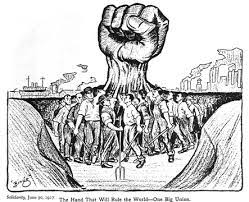
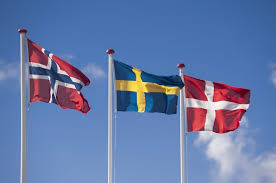
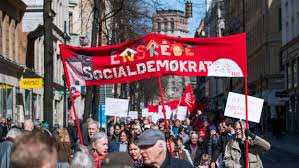
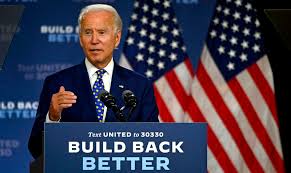


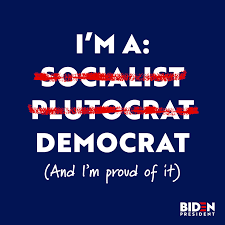

 RSS Feed
RSS Feed